"We, Too,
Are Making History" Series
Part 2: My Simple Approach to Implementing
Diverse History Lessons
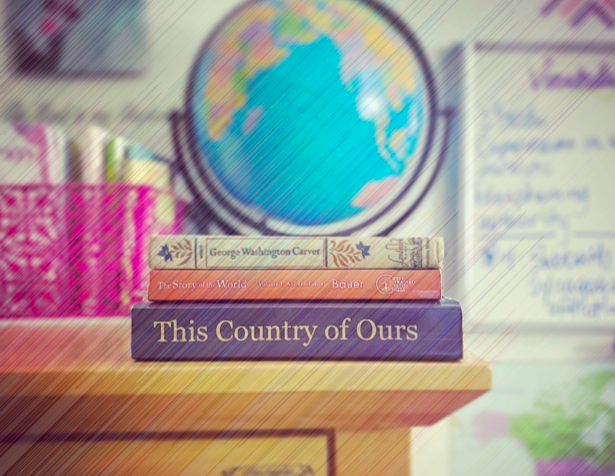
“We introduce children as early as possible to the contemporary history of other countries as the study of English history alone is apt to lead to a certain insular and arrogant habit of mind.”
-Charlotte Mason
Women's History Month, African-American History Month,
Hispanic Heritage Month are EVERY month in our home.
Always has been and always will be.
I didn’t think that was going to be an issue when we started following Charlotte Mason’s (CM) philosophy of education.
Bump on the Road
However, as I excitingly began learning more about a CM education, I hit a bump on the road when it came to the topic of literature, in particular with history, which I wrote about in Part 1: Growing Up Invisible. There appeared to be a lack of multiculturalism within book titles I found online, which didn’t reflect the rich diversity of our family.
Thanks to the dear friends who got me started on this CM journey, I was able to understand that Miss Mason’s philosophy didn’t lack diversity. In fact, it was way more inclusive than what it appeared to be online. Her methods are what I needed to focus on and then I could choose whatever resources to implement them.
So I had to go to the primary source to find her guidance in this area: Miss Mason’s Six-Volume Series.
In Volume 6, Miss Mason writes:
“We introduce children as early as possible to the contemporary history of other countries as the study of English history alone is apt to lead to a certain insular and arrogant habit of mind.”
Substitute “English” with whatever country you’re in. For me, it would read:
“…as the study of [American] history alone is apt to lead to a certain insular and arrogant habit of mind.”
I would even add that the study of a ONE SIDED American history alone is apt to do the same, and in the process, cause underrepresented groups of people to feel inferior or invisible within the history of their own country.
Miss Mason's Heart
Whether it was history, literature or geography, Miss Mason’s heart was for her students to have an abundant and diverse feast that would enable them to grow in knowledge, compassion and service. She wanted them to think outside the box and how they could be of service in their home, in their community and in their world.
I fall in love with Miss Mason’s heart more and more each day because it was one after the heart of God. God’s heart is for His people, all people everywhere regardless of color, culture or country. He wants His children to know they are ALL created with a PURPOSE and are CHOSEN as well as PRECIOUS in His sight. That message is clearly sent when they’re reading books that reflect these truths.
Go Back to the Source
So how do we diversify our history lessons when it can appear to some as if Miss Mason didn’t, whether that’s the perception based off of online suggestions or CM curricula?
My friends Min, Simone and Mariana, who are leaders in different capacities within the Charlotte Mason community and are also my co-hosts for our podcast “Charlotte Mason for All“, have taken me under their wing, guiding me in my CM education. One of the things they always push for is to go back to the source, to read Miss Mason’s words without all the outside noise.
It’s kind of like our Christian walk. We can use devotionals and read books about God and about walking with Him, living with Him, living for Him, but they can never replace the Word of God. It is our primary source as Christians and requires us to not only read it, but know it. The Psalmist says, “I have hidden your word in my heart that I might not sin against you.”
So if you have an opportunity to follow an educational philosophy that is Gospel-based, that gives you principles and methods to help you not only provide a broad education AND peace in your homeschool, but can also help transform your entire home, your entire family for the better, then you need to go to the source.
That’s what I was advised to do and that’s what I did.
So this is what Miss Mason has to say when it comes to history:
“Next in order to religious knowledge, history is the pivot
upon which our curriculum turns.” (Vol. 6)
“Once Intellect admits us into the realms of History, we live in a great and stirring world, full of entertainment and sometimes of regret; and at last we begin to understand that we, too, are making History, and that we are all part of the whole; that the people who went before us were all very like ourselves, or else we should not be able to understand them. If some of them were worse than we, and in some things their times were worse than ours, yet we make acquaintance with many who were noble and great, and our hearts beat with a desire to be like them.” (Vol.4)
I think her words here are self-explanatory. After the Bible, history is the next most important subject in education. It’s learning about the past so you can understand the present as well as understand your place right now in history.
But listen to this quote on how she felt about diversity:
“We cannot live sanely unless we know that other peoples are as we are with a difference, that their history is as ours, with a difference, that they too have been represented by their poets and their artists, that they too have their literature and their national life.” (Vol.6)
Do you hear Miss Mason’s global mentality there? Do you hear her inclusivity? She’s not only acknowledging that other peoples have their own history, poets, artists, literature and national life, but that it’s crazy for us not to intentionally learn about them and understand them.
As a result, Miss Mason had her students study neighboring nations and then the rest of the world through history, geography and foreign language lessons. In essence, history is not an isolated subject. It is organically connected with other areas of study.
Hence, you can add diversity through subjects such as
- geography (which is history’s secret weapon)
- there’s also artist study
- composer study
- poet study
- foreign language
- singing
- dancing
- literature (including school books, free reads and what you read for tea time or whatever you call the special time together. I love how a CM mom told me she was going to rename tea time to “café con leche” time with her students in their Cuban home)
It's About a Balance
The problem is we often think living books can only be old classics and that composer study can only be classical music and art study can only be European art. There’s so much other rich diversity in this beautiful world God created.
A multicultural aspect should be spilling over to the rest of your studies and even into your home atmosphere, because if not, it’s like counter-Charlotte Mason since learning about other cultures was essential for her. She believed in giving students a broad view of the world and understanding that we are all made in the image of God. Moreover, it’s the unity of cultures that create a cultural mosaic of our world and, in turn, reflects who God is.
So it’s about a balance and giving the whole feast, the complete feast. We should still learn and enjoy the more traditional history of our country. However, it should not be at the expense of learning about other cultures on a consistent basis. There should be a more even balance of giving all different perspectives in order to teach our children discernment in the light of God’s Word and to view history, a COMPLETE history through the eyes of God.
How can you balance it out?
The very living books you choose are the key- the key to diversifying your history and the key to keeping that balance.
Here’s what Ms. Mason says about history books:
“But let the mother beware: there is nothing which calls for more delicate tact and understanding sympathy with the children than this apparently simple matter of choosing their lesson-books, and especially, perhaps, their lesson-books in history.” (Vol. 1)
“Delicate tact and understanding sympathy” in choosing their history lesson books.
You know what that tells me? As a mother, I have to carefully, wisely, prayerfully select my history books.
How can you pray more effectively and intentionally for your child? Go back to Miss Mason’s principles, in particular her first and last:
1. Children are born persons
&
20. We allow no separation to grow up between the intellectual & 'spiritual' life of children, but teach them that the Divine Spirit has constant access to their spirits, and is their Continual Helper in all the interests, duties and joys of life.
Their Continual Helper is yours too, and He will guide you to truly understand who your child is as a person and He will help you discern what they need for their individual education. The Holy Spirit will guide you.
You know what else Miss Mason says?
“In hardly two households would the same plans be practicable; but every mother may strike out a course for herself, including what seems to her ‘the best’ as her circumstances admit of.”
What you study in your home is going to look different than in mine and vice versa. Our family dynamics are different, our children are different, our callings are different.
Miss Mason did not believe in a one size fits all education. You meet your child where they are at and instruct them as the Holy Spirit leads you.
She gives you the principles and the methods, and you, as the parent choose how you’re going to cook up that living feast for them. In my Puerto Rican home, our living feast might have a little more Caribbean flavor, a little Sazón, a little sofrito, and that’s okay.
I just wanted you to understand that before I share specific examples because sometimes we as homeschooling parents feel trapped or subconsciously forced to follow what everyone else is doing or the resources they’re using.
I pray that Miss Mason’s words free you of some of those pressures that can stifle you and, in turn, bring you to a place of surrender to the Holy Spirit’s lead, allowing God to be the Supreme Educator in your home.
That being said, let me share the simple approach I use to diversify our history lessons for our homeschool.
Miss Mason's Take on Teaching History
Like I said in the beginning, learning about women of any racial background and people of color is a constant, not only in our homeschool, but in our everyday life. Yet, what I did find was that I wasn’t providing opportunities to learn about any white males at all. My daughter would still learn about George Washington and other important figures because they’re ingrained in our American society. You can’t live here and not learn about them somehow. Nonetheless, I needed a balance, a way to merge various sides of our history. But how could I merge both worlds?
Well, as always, Miss Mason had an answer to my question.
-Book of Historical Events (Spine):
For my daughter’s Form* 2, Miss Mason encourages the use of a book of historical events told in chronological order. Today, it is referred to as a “spine” because it gives structure to your history plan of study, like the way the backbone gives structure to the body. It should be a living book** that tells the story in narrative form and not a text book with dry facts.
-Biography:
The other book Miss Mason encourages to use to teach history is a biography.
“Let him, on the contrary, linger pleasantly over the history of a single man, a short period, until he thinks the thoughts of that man, is at home in the ways of that period. Though he is reading and thinking of the lifetime of a single man, he is really getting intimately acquainted with the history of a whole nation for a whole age.”
(Vol 1)
Basically, let your child read a living book about the life of one single person so they know this person so intimately and in turn, they learn about the history of their day. So if I taught history through quality literature, then it would be more meaningful and enjoyable?! Brilliant and right up my alley!
– Neighboring Country/Ancient History:
Neighboring countries and ancient history streams*** are added to the history rotation for Form 2.
For more info on how history is studied throughout the grades/forms, look at A Delectable Education‘s helpful breakdown of the history rotation used in CM’s PNEU**** schools. Please keep in mind that their rotation and podcasts are just guides to help you in your planning. You can choose how you want it to work for your family. For example, we don’t study British history. Instead, we’re focusing on American history and we’ll be studying Puerto Rican/Caribbean history. (I’ll go more in depth on this topic below)
Min Hwang’s History through the Years: An Overview of a Charlotte Mason History Education and Customizable History Stream Chart are also excellent resources, giving the big picture of the history requirements throughout the forms in a very inclusive way.
– Historical Fiction:
Historical fiction, when carefully selected, can help bring a time period to life and give a student a similar experience as that of a biography book.
Simple Way of Merging Both Worlds
Miss Mason gave me an easy fix to my complicated dilemma. Her method of teaching history allows me to personalize my daughter’s history plan so that her heritage is celebrated while still learning about the rest of world history.
Now, I use a spine which includes historical events (and all the white male’s history
that I wasn’t covering before)
AND
I get to choose biographies & historical fiction
that focus on people of color as well as
women of any racial background.
It's a perfect fusion in our home!
Here’s how our simple history format looks on a weekly basis for my 10 year old / 5th Grade / Form 2 student. Once a week, she reads 20-30 minutes from the following during her morning lessons:
- a Spine (This Country of Ours)
- a Biography on either a woman of any ethnicity or a person of color each term (Current biography: Abigail Adams)
- a Narrative Text on Ancient History (My girl enjoys The Story of the World Vol 1: Ancient History)
In the afternoon, a few times throughout the week, my daughter reads:
- a Historical Fiction (HF) book that's also either on a woman of any ethnicity or a person of color (Usually a student her age is expected to read HF on her own but since it's just the 2 of us, it becomes a read aloud together. We're wrapping up the Little House series which we usually listen to during lunch or in the car.)
Other Ways to Diversify History Lessons
That’s how I’ve chosen to implement diverse books.
For those who are interested in diversifying your history, you can take a similar approach.
For example, you can alternate your biographies and historical fiction so it focuses on people who differ from you somehow, whether the differences are ethnic, cultural, gender-based, of learning differences or some type of physical limitation. Our differences are endless.
You can also read books that have a different perspective on a shared experience. For instance, in Form 1, your child is reading a picture book on Christopher Columbus, maybe your next book can be Jane Yolen’s “Encounter” which tells of Columbus’ arrival in the Caribbean from the perspective of a Taíno child, who were the Indigenous people of the islands. Giving 2 sides of a story provides a broader perspective for your children to decide for themselves what is right.
You can take those same suggestions for older kids.
We just wrapped up the Little House series so now for the summer, we’ll be reading “The Birchbark House” which is from the perspective of a young Native American girl during a similar time period. We hope to read the entire series
History Streams
So what about history streams for those of us with multicultural or multi-ethnic backgrounds? For those of you unfamiliar with the term “stream”, it simply describes another focused study of different countries or time periods, such as ancient history. You add a stream to your school year, which you study simultaneously with your nation’s history.
Neighboring countries and ancient history streams are added to the history rotation for Form 2, which are grades 4-6. When Miss Mason speaks on neighboring countries, it may not necessarily be the one physically closest to your child’s nation but it can be the country that has some form of connection with their country or “throws light on that of their own country.” (Charlotte Mason, Vol 6)
In Min’s post I mentioned above, she talks about is what she calls a “Heritage History Stream.”
Min’s heritage history stream is a 4th stream added which focuses on the heritage of a family when the first 3 streams aren’t enough for multicultural or multi-ethnic families. Adding another stream that focuses on your country (or countries) of heritage is such a meaningful option for families to have.
Now, for Americans who use Charlotte Mason, the most common choice for their neighboring country stream is Great Britain because of its historical ties to the US.
However, like I described in my “Invisible No More” poem I wrote many years ago, our family’s cultural history is just as important as our American one. Therefore, for our homeschool, instead of studying American and British history, we’ll be focusing on American and Caribbean history with a focus on Puerto Rico.
Again, this is what is best for our family and it is not a decision I made lightly. My husband and I have been on a life-long journey of cultural self-discovery. He knew very little of his heritage growing up and I was taught so much of it but found it nowhere else. Then when I learned that the neighboring country I choose for my child’s schooling is the one she’ll focus on until she graduates high school, it sealed the deal for me.
This is how the Holy Spirit has led our family. And Miss Mason’s method of teaching history allows me to personalize my daughter’s history plan so that her COMPLETE heritage is celebrated while still learning about the rest of world history.
Finding the Right Books is Always Worth It
I just want to clarify that diversity is inclusive of all cultures, including those of European descent. So I’m not saying you no longer learn about European history or your country’s traditional history. It’s about a healthy balance, a full and COMPLETE feast that Miss Mason emphasized, that represents more of the cultural mosaic of our world.
Yes, I get it can be difficult to find the resources to dive into other cultures. But, remember, we’re living in different times than Miss Mason did, with way more options and accessibility (thanks Amazon).
For example, Miss Mason encouraged a spine but what if there is no spine for your child’s nation or for your neighboring country? Then you can substitute the spine with books that tell of tales and heroes of that country, and find books about the country’s history. It may not be a traditional spine but if it is in a narrative form and has literary power, that’s more than enough.
What about the classics? First off, classics didn’t start off as classics. Secondly, a classic is not a classic because it’s Eurocentric or because it’s old. Instead, it’s a classic because of its universal truths and with all the beauty, as well as all the flaws, of humanity. Therefore, modern books can also be classics. Think about it. The classics started out as modern books of their own time. So for us, we, too, have modern living books that will be considered classics in the future. Miss Mason’s pursuit was for the best books of her time to share with her students. If she were alive today, she would be including modern, living books that reflect the diversity of our world. (Read more about this in my Living Books post.)
Also, don’t discount the literary power of picture books for your older students. All you need is that right one, with powerful words and images that bring living ideas into your home and into your child’s heart, regardless of their age. (Read more.)
Another key point to make is what may be living to one family may not be to another. Or it may resonate with one student and not the other, even in the same family. (Read more)
Finding the right books may be challenging but it is not impossible. It’ll take work on the parents’ part. You must be proactive in searching for the necessary books.
Theodore Roosevelt said “Nothing in the world is worth having or worth doing unless it means effort, pain, difficulty.”
If diversifying your history plan is important to you, then you will do the work to make it happen.
I’ve compiled an ONGOING LIST OF MULTICULTURAL HISTORY BOOKS with about 150 multicultural books that can be used in your history plan.
I share it freely here as a resource for those interested in implementing a Multicultural History. And if you subscribe, you’ll get my monthly notifications of when that list has been updated.
I’ve also created a resource to help you diversify your American History:
Another helpful post is African & African American Resources for Early Modern History where Amber from “Heritage Mom” shares some wonderful resources to infuse African/African-American history into your homeschool.
You Can Personalize Your History Plan Too!
Miss Mason’s methods give you the freedom to personalize your family’s history plan. Remember, it’s about following Charlotte Mason’s principles and methods, not a curriculum.
This is just one simple way of how I use her principles to meet our family needs. If a multicultural education is important to you, then I encourage you to explore some of the suggestions I gave or figure out your own ways to implement diversity in your instruction or you can contact me for a consult. If you’re feeling a bit of fear over attempting something new, then pray. The Holy Spirit will empower, equip and enable you to create the history plan that is just right for your family.
*Forms- British equivalent to American Grade System
**Living Books- quality, narrative writing that brings a subject to life
***Streams- Simultaneously learning about the history of different countries/time periods within the school year
****P.N.E.U.- Parents’ National Educational Union, which is the organization CM founded that followed her philosophy of education.
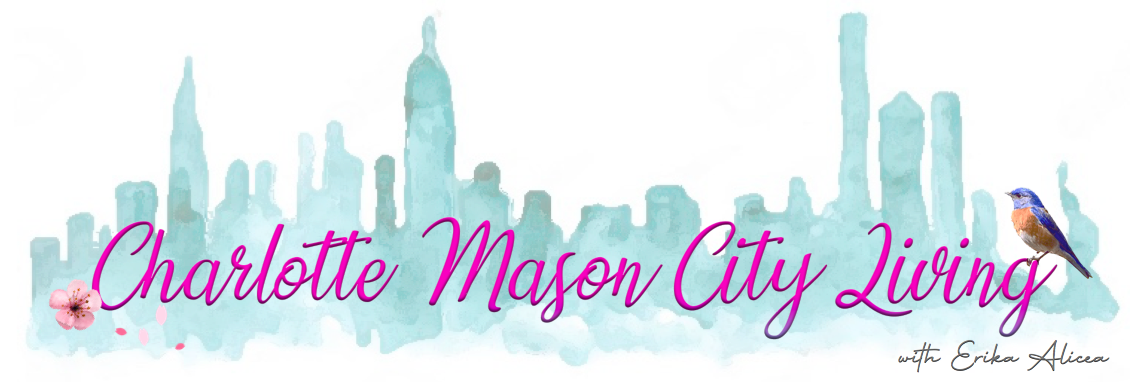
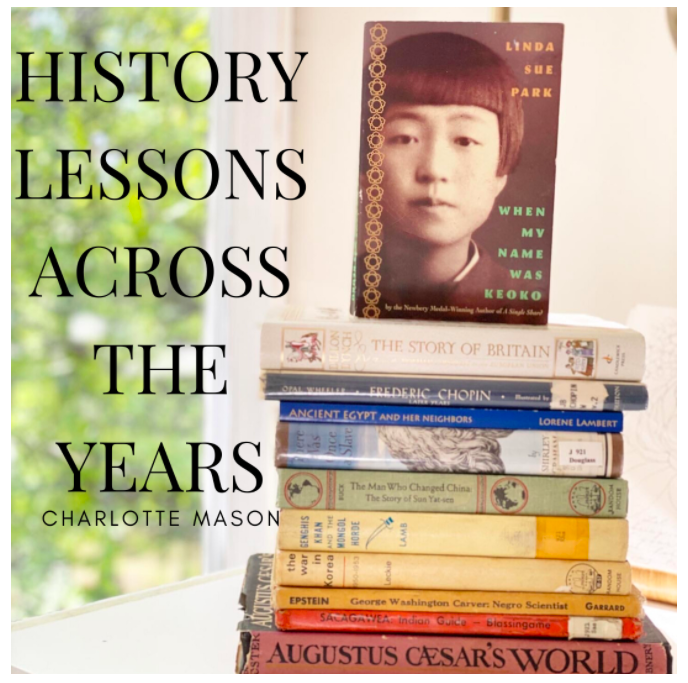

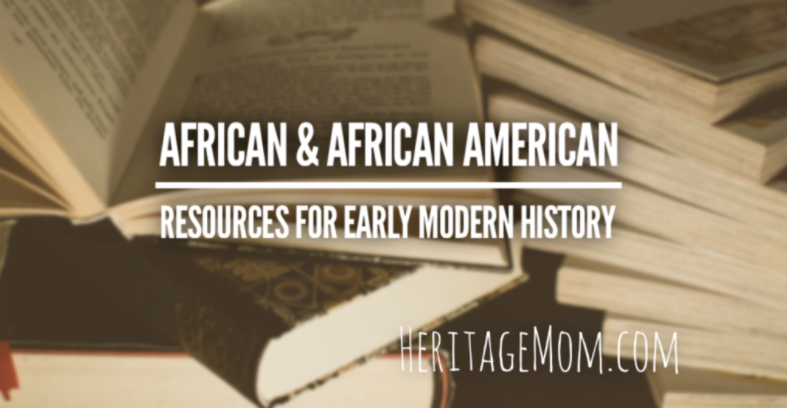

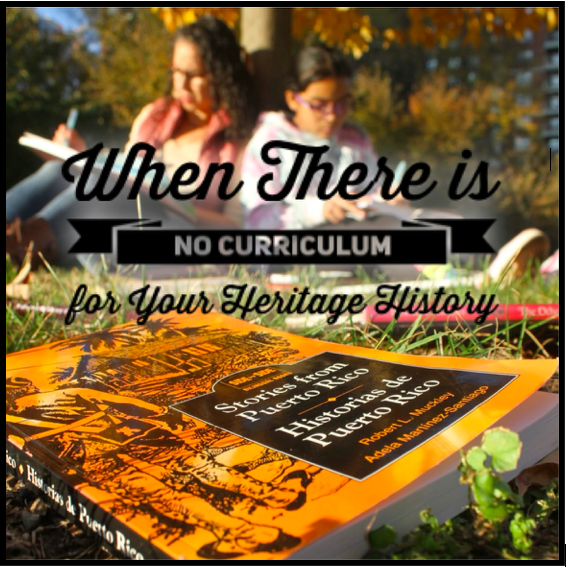
Erika I’m so thankful for this post! I’m very inspired by your approach to multicultural history and so thankful you’re my “in house” librarian!
You’re so funny Mariana! It is my absolute pleasure to share as you generously share your wealth of knowledge with me. xoxo
Pingback: Me Teach Mostly White Men’s History?? Um…No Thank You |
When you write, I just feel so validated. You say all of the things that are in my head, and it feels GOOD. Thank you for all of the hours you’re pouring into this amazing resource for mamas everywhere – including me!
Amber, you don’t know how much your words mean to me. Thank you for your encouragement!
THANK YOU! This is such a gift to me! I had similar thoughts and concerns about the CM approach to history. You have saved me a TON of time by sharing this article and your book lists. I greatly appreciate it.
Yay! This is what I love to hear! My pleasure Jayna. Thank you for your encouragement!
I just love this, Erika, I think you’re so right about Charlotte Mason’s heart 🙂 My eldest is in year one, and we’re reading lots of tales, but I’m wanting to dig more into biography as my book budget allows 🙂
Thank you Amy! Oh, if we only didn’t have budget! What would life be like?? I’m guessing we’d all be swimming in a sea of books. LOL
Erika!! This is great!! So my family has alot of different background but is mostly Spanish then going to Cuba. I have not been able to find a good children’s book on the history of Spain or really Cuba. Have you? I am trying to start interspersing some of your book recommendations and make space for books that reflect more diversity and some of our own heritage. I wish I would have started this years ago, but thanks to you, I am starting now!!! May God bless the years the locust have eaten!!
Amen and amen Betty! It’s never too late and I couldn’t have said it better: God will replenish what the locusts have eaten. I’m working on titles now and I so appreciate the Cuban titles you’ve emailed me so far. Let’s keep working together on this because I’m also collecting titles for our Caribbean History Stream. Thank you!
Hi Erica-
I am the administrative assistant for Julie Ross, author of A Gentle Feast curriculum and the host of The Charlotte Mason Show podcast. Julie is interested in having you read this blog post as an audioblog for an upcoming podcast. If you are interested, please email me and I can send you some details! Blessings!
Shay Kemp
Pingback: DESCHOOLING: 10 Tips on Transitioning from Traditional School to Homeschool |
Glory to God!
I’m so relived to have stumbled upon this website. The entire site is so down to earth, validating, and uplifting. Thank you for this wonderful resource!
Thank you Mindy for your encouragement! How you described my work here is exactly what I was praying for so your words mean a lot!
Pingback: Episode 3: How to find multicultural history resources for your home
Pingback: When There is No Curriculum for Your Heritage History |
Pingback: Homeschooling: 10 Tips for Newbies |
Pingback: Homeschooling: 10 Tips for Newbies -